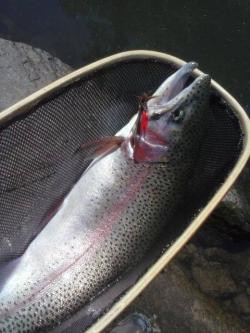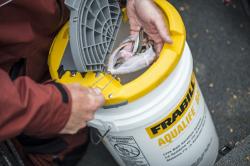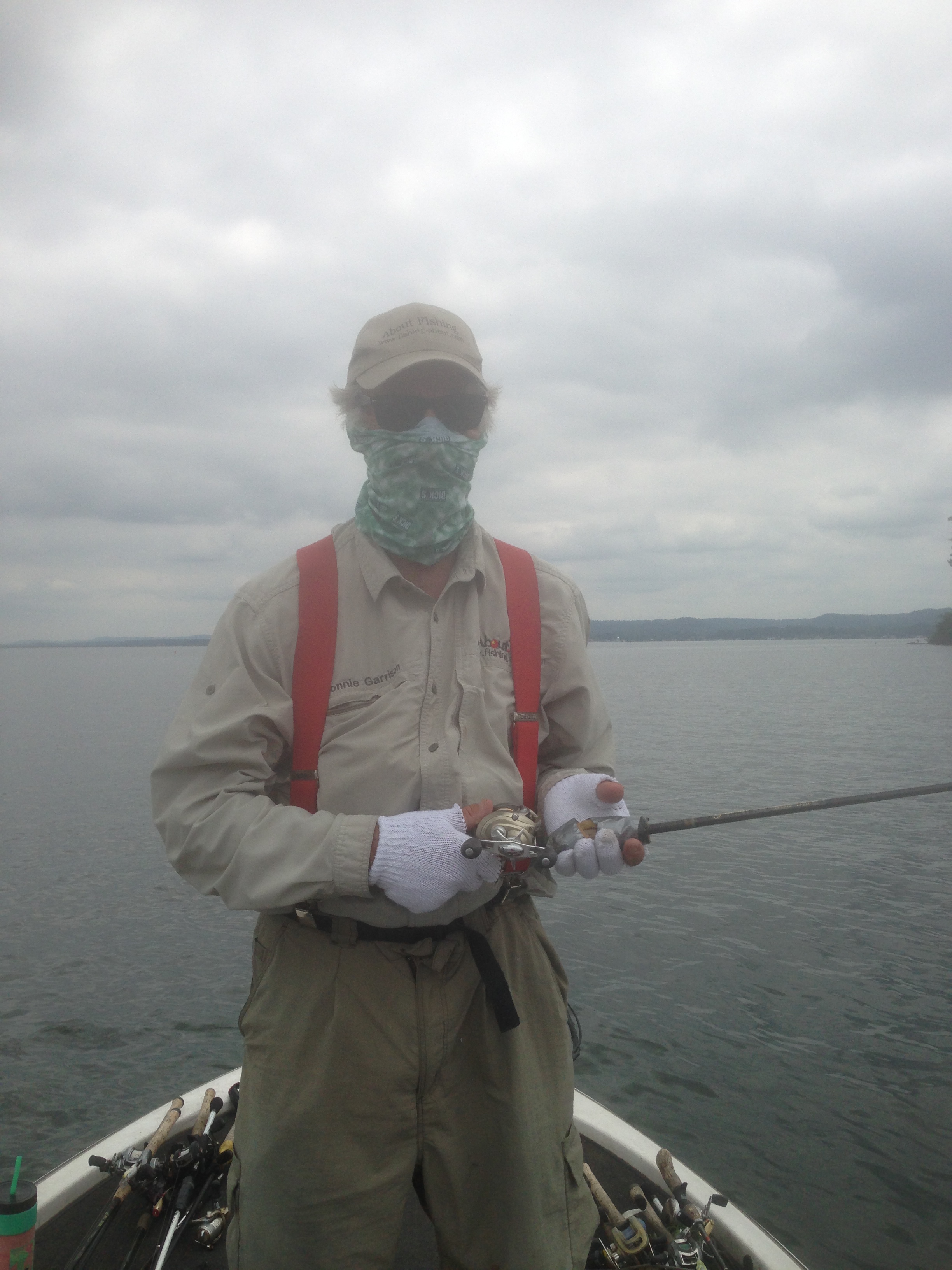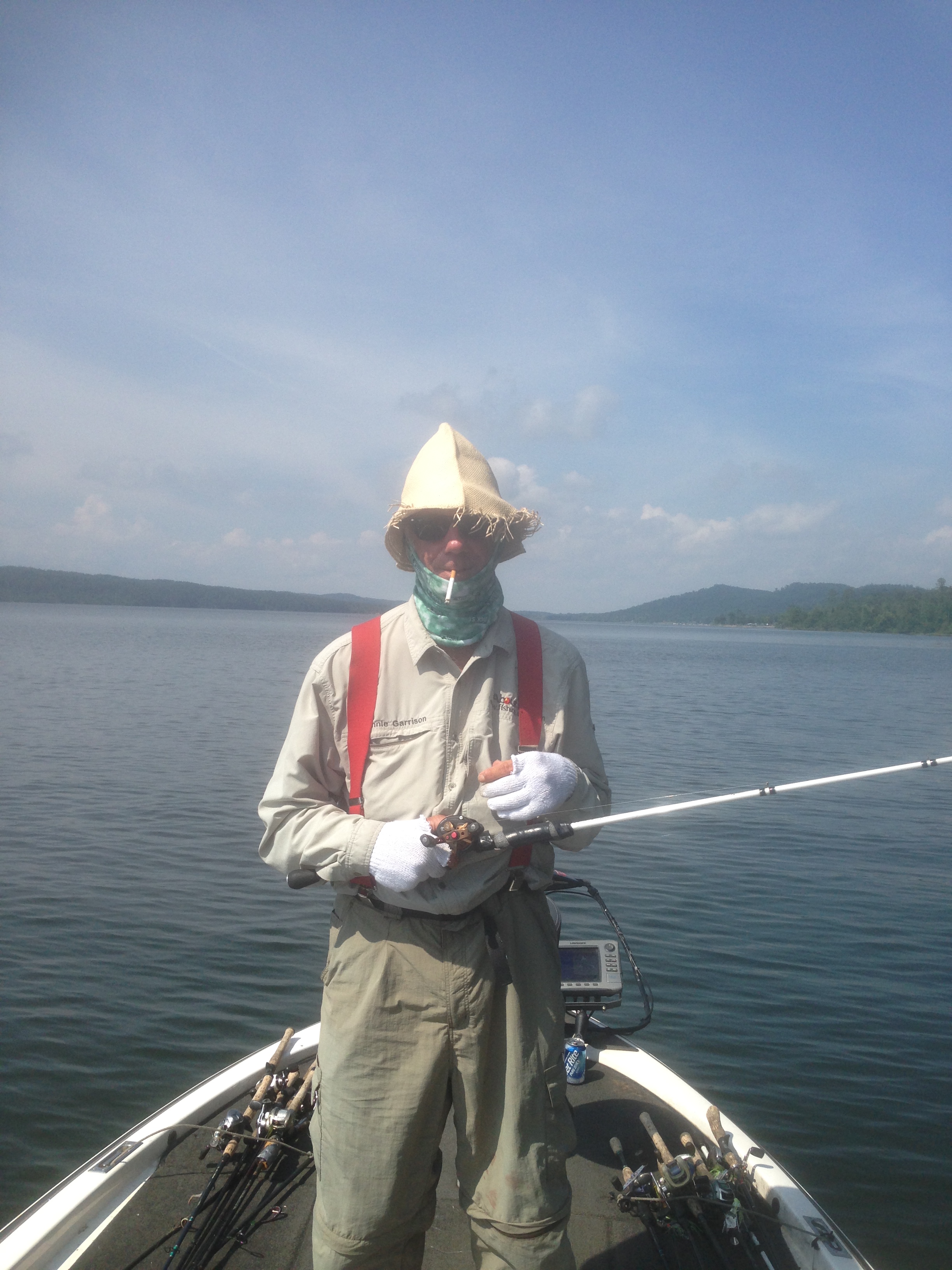Fishing from a kayak in Georgia is great!
Have you ever been crappie fishing back in a cove full of button bushes and thought “if I could just get in behind these bushes I could load the boat with slabs?” Ever crossed a rocky river and thought about all the bass in the deeper holes and wished you could get to them? There is a way.
Kayak fishing is becoming more and more popular as people learn about it. Fishing from a kayak is inexpensive, it allows you to get to places others can’t fish and is a peaceful way to cover waters you can’t reach from the bank. And some modern kayaks are stable enough to stand in while casting.
Randy Vining has fished all his life. He started going to ponds creeks with his grandfather and progressed to the point of having a big bass boat and fishing tournaments. A couple of years ago he discovered kayak fishing and it allowed him to “get back to his roots” of fishing smaller waters, and catching more fish. His bass boat has not been moved from his yard in two years now.
Now a board member of the Georgia Kayak Fishing Club and on the Ocean Kayak Pro Staff, Randy gives seminars and has helped organize the first bass tournament trail for kayak fishermen. He has a half-dozen different kayaks and has spent many hours rigging them to make them efficient fishing boats. The growing sport of kayak fishing is a big part of his life and he is enjoying the hours on the water as well as the time spent helping others.
Choosing a fishing kayak is not as simple as you might think. What length and width do you want? Does color make a difference? Should you get one like you see on TV in the Olympics with people running white water rapids?
Randy says as “sit on top” is much better for fishing than a “sit inside” kayak. Sit one top boats can’t sink because they are full of air. They allow more freedom of movement and you can even stand up in some models. You can carry much more fishing equipment. And if you tip over you can get back in without having to learn the “paddle roll” method of righting the boat.
In general terms, width equals stability and maneuverability and length equals speed and straight tracking. If you are fishing the creeks on Lake Blackshear working around the cypress trees fishing for bass, you want a short, stable boat. If you are paddling three miles off-shore to fish for Spanish mackerel you want a fast boat that is easy to paddle and tracks straight.
Pay attention to the front and back. A deep skeg on the back is good for tracking in a straight line but not so good for running river shoals. A pointed bow makes the boat cut through the water and move more easily but is less stable for leaning side to side.
Color may not seem important but you need to consider two things. You are going to be in direct contact with the boat so you want a color that does not get too hot. And you want a very visible color so other boaters can see you. Randy says a yellow color stays cool and is visible.
You can get a good basic fishing kayak for less than $1000 new. You will probably spend that much more rigging it though. You will save money on gas and oil since you don’t need any in the kayak and you don’t have to tow a heavy boat and trailer. Kayaks don’t have to be registered since they don’t have a motor. And you can start with the basics and add the more expensive rigging as you learn what you want to do with your kayak.
You can get a kayak and a paddle and go fishing. But there are many accessories that will make it more comfortable and make fishing more efficient. The nice thing about most accessories is they are easily interchangeable with other kayaks and you can take them off or put them on as the situation demands. Accessories clip on the boat or slip into mounting holes you cut for them.
The taller you are and the wider your kayak the longer paddle you need. A shorter paddle means you have a higher angle and don’t dig as deep when paddling but a longer paddle is more cumbersome to handle and store. With any length it is important to get a good leash and keep it attached to the boat. You don’t want to be up the creek without a paddle and you can hold on to the leash to help you get back to the boat if you tip over.
A good seat with a support for your back is a basic necessity. Your back can get very tired if you paddle and fish very long so try different seats until you find one that gives you good support. Inflatable seats are comfortable but may not provide enough back support.
An anchor trolley is a rope and pulley system that runs the length of the boat and helps you move your anchor or drag chain to adjust it. You can also use it to tie up along side a dock. And you can clip it to your belt when you get out to wade and your boat will stay with you.
Fishing accessories are as varied as your imagination wants them to be. Dry boxes are good for storing things you want to keep dry, like a cell phone, and the built in boxes in a kayak will not stay completely dry. Tackle boxes can be bought to fit existing compartments or you can make special attachments for them. Coolers are the same.
Rod holders, a depthfinder and/or GPS can be mounted where you can use it but it does not get in your way. You can get a rudder system that you control with your feet and some kayaks even have a propulsion system that you paddle with your feet. A drag chain is important for fishing moving water and you can make your own with a piece of chain run into a bicycle tire tube to keep it quiet and make sure it doesn’t hang up as bad.
Plan on getting wet when fishing from a kayak. Even if you don’t tip over you will get wet from water dripping from your paddle. In cooler weather you can wear waders to keep you dry and also to use if you get out of the boat to fish.
Boating laws require you to have a life jacket and should wear it at all times. Get one that has straps at the top rather than bulky floats to allow freedom of movement while paddling. But be sure to get one that is comfortable to wear all day.
You will need one white running light and battery powered ones are available. A noise maker like a whistle is also required. Randy recommends a pea-less whistle to make sure it works when you need it.
Now that you are rigged and ready, where do you go fishing. You can catch any kind of fish in Georgia so take your pick. From small ponds to creeks and rivers, and even big reservoirs, kayaks give you access to all kinds of fish.
Randy recommends three books to help you find where to fish. “Fishing Georgia” by Kevin Dallmier lists fresh and saltwater fishing spots. “A Canoeing and Kayaking Guide To Georgia” by Suzanne Welander, Bob Sehlinger, & Don Otey gives access points to waters with lengths of trips, a very important factor. And Randy says a good road atlas is invaluable to getting where you want to go.
When planning a trip on a river or stream Randy says plan on fishing about one mile per hour. And he says you don’t want to fish more than about six hours a day or you will get very tired. You should always kayak in groups of at least two and that makes planning a trip much easier. Leave a vehicle at your take-out spot then drive upstream to put in. Floating downstream fishing is the way to go on moving water.
Some of Randy’s favorite trips are the Ocmulgee River blow Jackson Lake dam, the Chattahoochee River south of Atlanta and the Ogeechee River. All are good bass fishing waters and have several access points. Randy says you want to stay in the Piedmont section of Georgia and south since shallow water and rapids make fishing further north difficult.
Randy will be happy to get you into a kayak and take you fishing. The Georgia Kayak Fishing Club has many events where you can try kayaks and see how you like it. You can also experiment with different boats and rigging to see what suits you best.
Check out kayak fishing. It is a fun, inexpensive way to get on the water and catch fish.
The Georgia Kayak Fishing Club website is http://www.georgiakayakfishing.com/ – their link page – http://www.georgiakayakfishing.com/Links gives links to kayak clubs, kayak companies, outfitters, gear makers, destinations and other information for kayakers.











